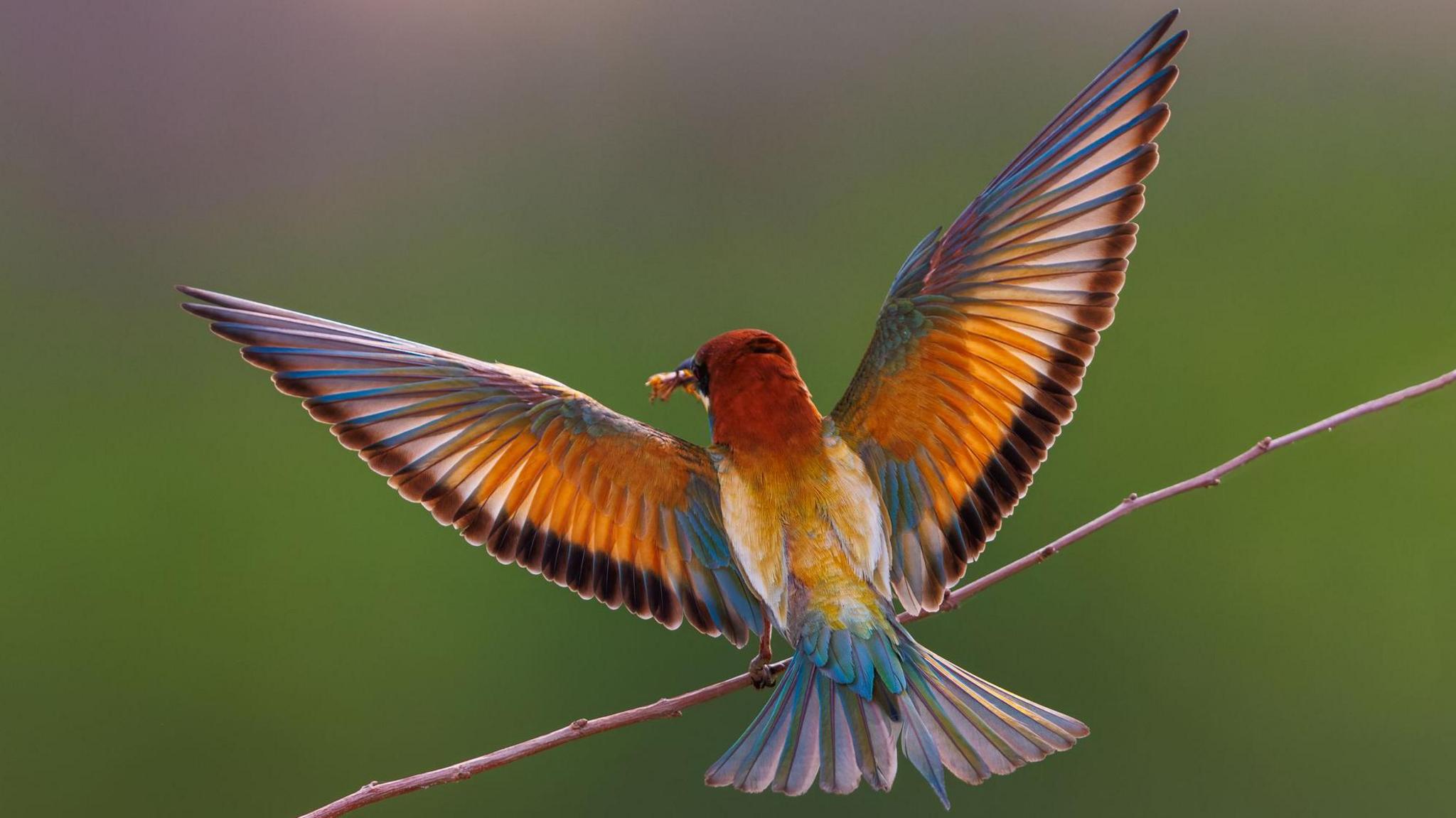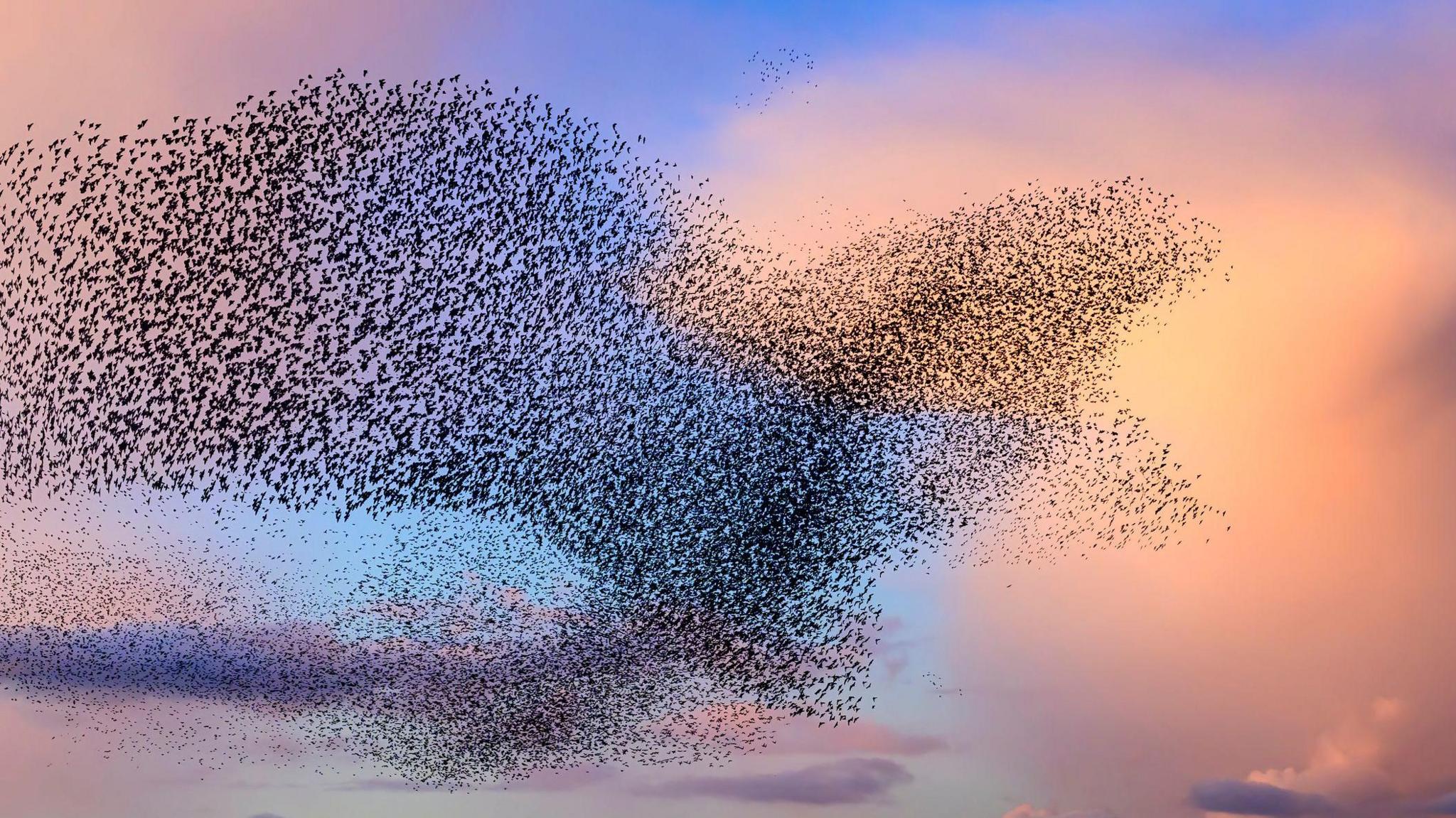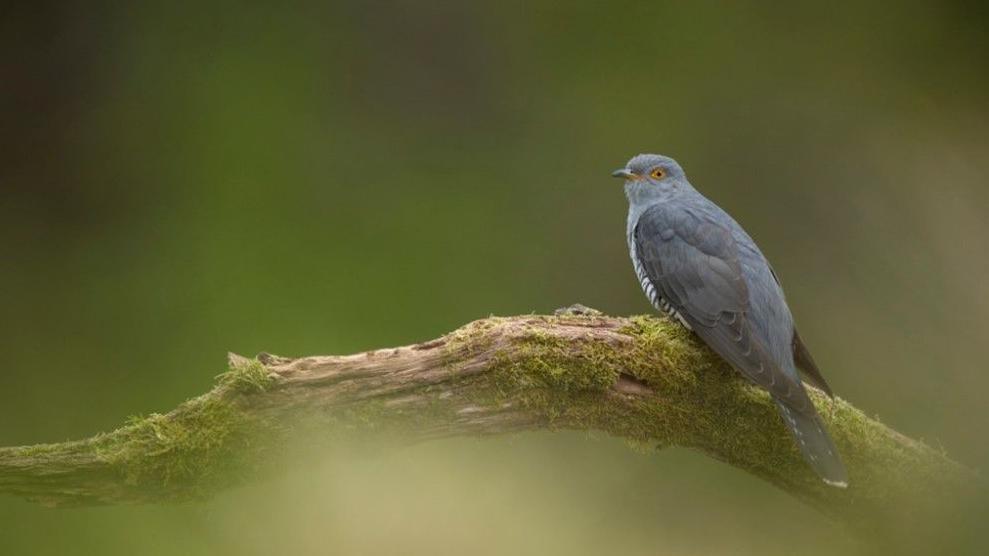Top spots for spring bird migration

A rarely seen bee-eater was spotted on the East Yorkshire coast
- Published
Conservation charities have named some of the best locations to see migrating birds as they stop off in East Yorkshire and Lincolnshire.
According to the RSPB, there is a surge in bird migration during the spring, when summer visitors like swifts and cuckoos arrive to eat and breed.
From Flamborough to Frampton Marsh near Boston, there are thousands of birds to spot, and the global bird movement is being highlighted as part of World Migratory Bird Day on 10 May.
RSPB volunteer Gill Reid said last week a bee-eater, which is rarely seen in the UK, flew through Flamborough, went out to Spurn and carried on south.

Conservation charities have named the best locations to spot migrating birds
Mrs Reid said different species come from Africa looking for food and somewhere they can breed.
She said: "Sometimes they overfly so, whilst migrating through Europe, the wind catches them and they end up in our region."
North East Lincolnshire Council said thousands of wetland birds stop off along the coast.
The council asked visitors not to disturb the birds, to keep to designated footpaths and keep dogs under control.
It also advised anyone using the coast for water sports to stay away from the salt marsh and sandbanks.
Where to birdwatch in East Yorkshire
Bempton Cliffs, Bridlington: The white chalk cliffs have been a haven for migrating birds. According to the Flamborough Bird Observatory, swallows, swifts and house martins were seen in May. The RSPB said gannets had arrived back on the east coast, bringing hope for a good breeding season.
Blacktoft Sands: According to the RSPB, reed warblers and cuckoos have been spotted in the past.
Spurn National Nature Reserve: The Spurn Bird Observatory, which is run by Yorkshire Wildlife Trust (YWT), said firecrests and wrynecks were spotted in May.
North Cave Wetlands: The RSPB said the yellow wagtail, redstart, chiffchaff and willow warbler had been seen in previous years at this reserve, which is also run by YWT.
Hornsea Mere: According to Yorkshire Coast Nature, the white-winged black tern and red-backed shrike have been spotted.
North Cliffe Wood Nature Reserve: The Yorkshire Wildlife Trust said willow and garden warblers, chiffchaffs and blackcaps were seen there.
Where to birdwatch in Lincolnshire
Far Ings National Nature Reserve: According to the Lincolnshire Wildlife Trust, the reserve is a major east-west flyway for migrating birds including pipits, finches, swallows, martins, swifts, larks, starlings, waders and wildfowl.
Gibralter Point National Nature Reserve: Lincolnshire Wildlife Trust said little terns can be seen fishing in the shallows and skylarks can be heard in full song above the purple haze of the saltmarshes.
Whisby Nature Park: According to the Lincolnshire Wildlife Trust flocks of tits, finches, warblers, sand martins, swallows, black-headed gulls, chiffchaffs along with reed and garden warblers can be found.
Correction 28 May: This article previously incorrectly said that there were thousands of species of birds to spot. It has been updated to say that there are thousands of birds to spot.
Listen to highlights from Hull and East Yorkshire on BBC Sounds, listen to highlights from Lincolnshire on BBC Sounds, watch the latest episode of Look North or tell us about a story you think we should be covering here, external.
Related topics
- Published11 May 2024

- Published19 October 2024
